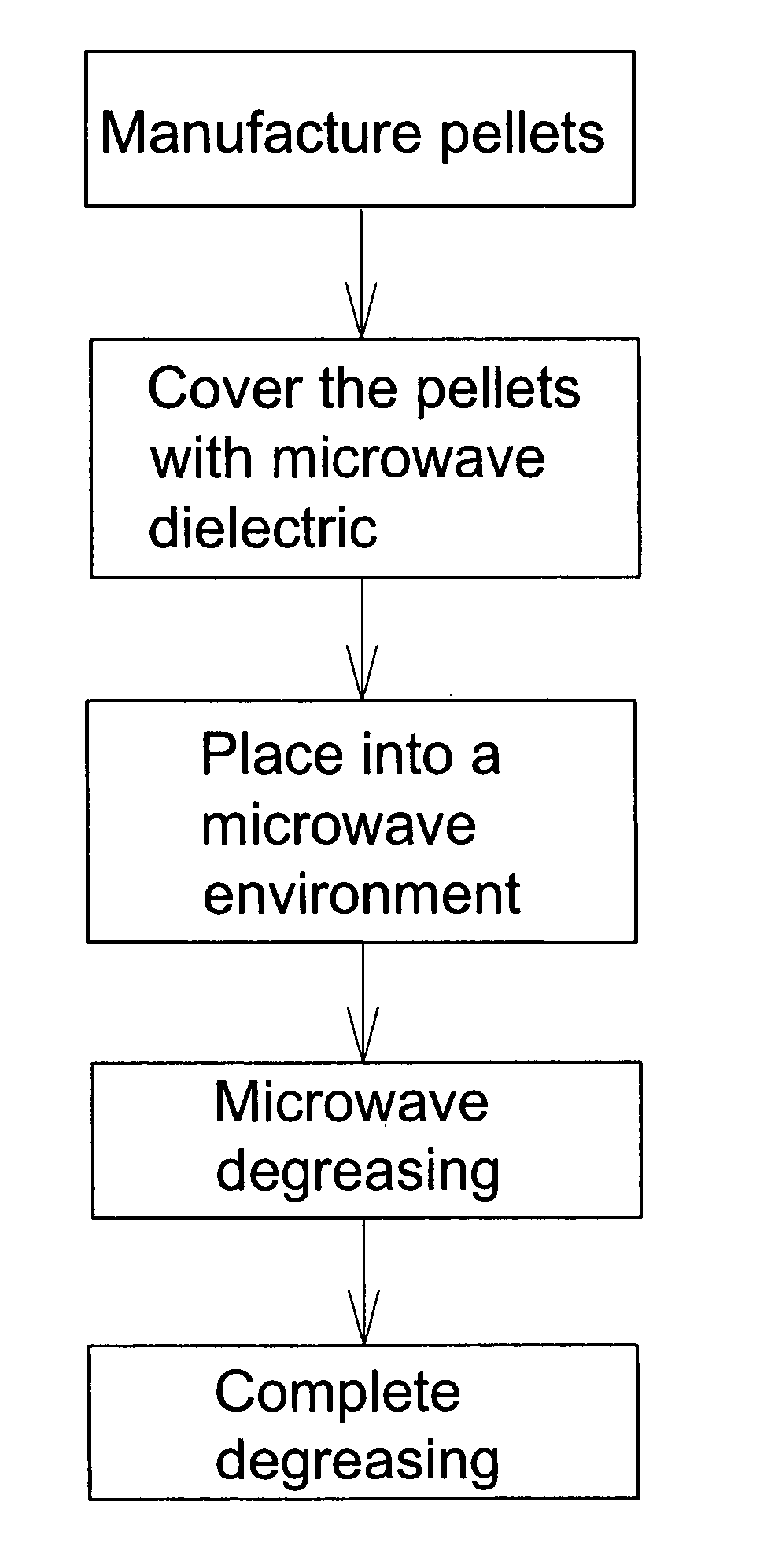Processing method for ceramic
- Summary
- Abstract
- Description
- Claims
- Application Information
AI Technical Summary
Benefits of technology
Problems solved by technology
Method used
Image
Examples
Embodiment Construction
[0036] Referring to FIGS. 1 and 2, which show primary steps of a processing method for ceramic according to the present invention consisting of: [0037] (a) Manufacture pellets: After mulling ceramic powder material with an adhesive, a bulking agent or a lubricant, manufacture the pellets through molding methods such as injection or scraping; [0038] (b) Cover the pellets with microwave dielectric: Bury the pellets (1) in the microwave dielectric (2) (the pellets and the microwave dielectric can be placed together in a container (3); [0039] (c) Place into a microwave environment: Place the aforementioned pellets (1) covered with the microwave dielectric (2) into the microwave environment (4) capable of generating microwaves (for instance a microwave oven); [0040] (d) Microwave degreasing: Regulate microwave power and time period in the microwave environment (4), whereby the microwave dielectric (2) powder absorbs the microwaves and thereby allows degreasing of the pellets (1) embedded...
PUM
| Property | Measurement | Unit |
|---|---|---|
| Time | aaaaa | aaaaa |
| Volume | aaaaa | aaaaa |
| Volume | aaaaa | aaaaa |
Abstract
Description
Claims
Application Information
 Login to View More
Login to View More - R&D
- Intellectual Property
- Life Sciences
- Materials
- Tech Scout
- Unparalleled Data Quality
- Higher Quality Content
- 60% Fewer Hallucinations
Browse by: Latest US Patents, China's latest patents, Technical Efficacy Thesaurus, Application Domain, Technology Topic, Popular Technical Reports.
© 2025 PatSnap. All rights reserved.Legal|Privacy policy|Modern Slavery Act Transparency Statement|Sitemap|About US| Contact US: help@patsnap.com



